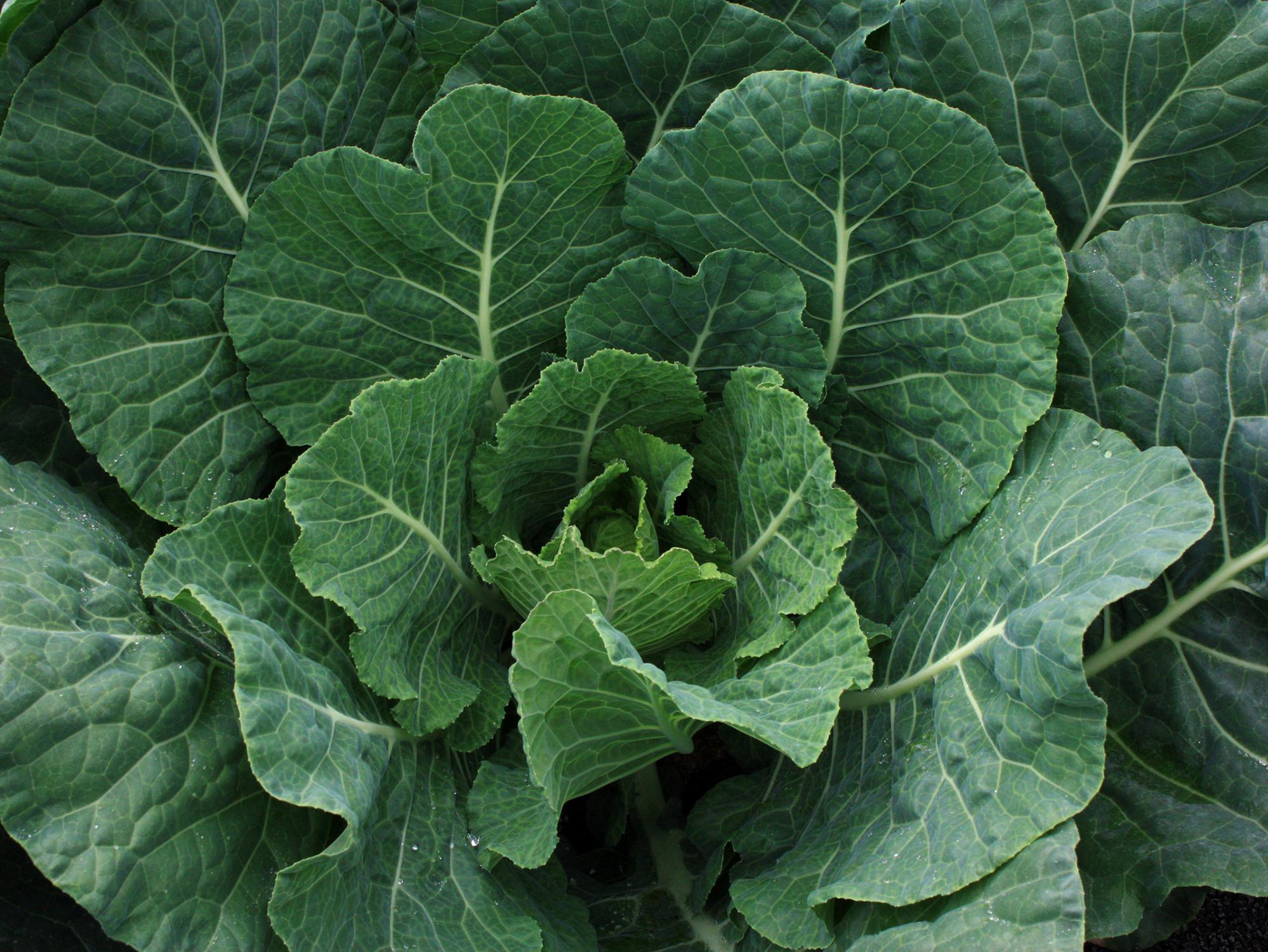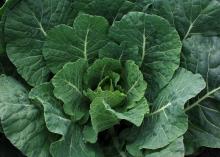Information Possibly Outdated
The information presented on this page was originally released on January 18, 2019. It may not be outdated, but please search our site for more current information. If you plan to quote or reference this information in a publication, please check with the Extension specialist or author before proceeding.
Collards gain Medallion award, thrive in the state
If there’s one vegetable that could be considered the ultimate home-grown vegetable in Mississippi, it has to be collards.
Collards were chosen as a 2019 Mississippi Medallion winner because they are considered absolutely necessary for true Southern cuisine. As a bonus, they’re really easy for home gardeners to grow.
Collard greens, known botanically as Brassica oleracea, are multipurpose vegetables for Mississippi gardens. We grow our best collards in the fall, through winter and into spring. This makes sense as collards don’t tolerate high temperatures very well, but they appreciate cooler weather, even frost and freezes. In fact, the cold intensifies collards’ flavor profile.
As you may know, collards are a cruciferous vegetable like broccoli, cauliflower and cabbage. These vegetables all taste better when picked in mid-winter.
There are many varieties of collards available, including hybrid and open-pollinated types. The Mississippi State University Extension Service recommends these varieties for Mississippi gardens: Vates, Top Bunch, Georgia LS, Blue Max, Champion and Tiger. Seeds are readily available from most retail garden centers, or you can order them online.
To direct-seed collards, plant seeds 1/4 inch deep and 12 to 24 inches apart in rows spaced 24 to 36 inches apart. They also grow extremely well in containers, which is my favorite growing strategy. Seeds germinate in about 10 days. Expect to harvest greens in 50 to 75 days.
I like to buy transplants, which can make the growing process easier. Even with the colder weather, I saw transplants at my local mega garden center this past weekend.
All parts of the collard plant are edible and can be picked fresh from the garden during the entire growing season.
Large, mature leaves are tough and fibrous, which gives collards their reputation of taking a long time to cook. While I like a pot of fresh-cooked collards, I also like to harvest the much more tender young leaves, which are just as delicious and can be eaten raw in a salad. Collards are a traditional substitute for cabbage all across the South.
However you eat them, collards are good for you as an excellent source of the dietary phytonutrients beta carotene, vitamin C and calcium. Always choose darker leaves, as they contain more of these important plant compounds.
Collards’ main insect pest are cabbage worms, which damage all cruciferous vegetables. Several products can help control these pests. I like using formulations that contain spinosad or Bacillus thuringiensis, commonly abbreviated as “Bt.” These are marketed under a variety of brand names, so be sure to read the ingredient label. Organic products are also available, which is good news to many growers.
Collards have the reputation of having a bitter taste, which leads many folks to love them or leave them. They contain a compound called phenylthiocarbamide, which about 70 percent of the population can detect. Some people dislike collards because of this extreme flavor, while others thoroughly enjoy the bitterness. Others don’t even taste the bitterness. Which group are you in?
I wouldn’t worry about the bitterness aspect too much. Cooking them down with a little -- or a lot of -- bacon or ham will certainly make them taste good.



